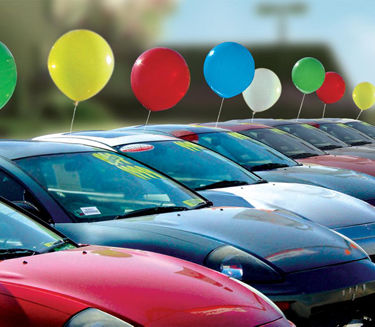There’s plenty of mileage in the relationship between radio and automotive, with the category continuing as the largest vertical over the airwaves. But during a sit-down with two established auto dealers during the Radio Show in Austin, attendees of the session “Driving Results for Car Dealers” were given an opportunity to go beyond the showroom doors.
Both panelists made clear that local radio remains a significant part of their marketing mix because, simply put, the messaging brings people through the doors. “Just as it’s always been, we look at showroom visits,” said Scott Elder, president and owner of Dream Cars Austin. “If advertising gets people to come to the dealership, I feel it has done its job. We know people are going to do their online research and then hopefully, advertising will spark the interest to come in.”
Referring to radio advertising’s “halo” effect, it often has as much to do with remaining top-of-mind with repeated over-the-air messaging as it does messaging a specific sale or promotion. But there is more that radio can do: To become more effective, not surprisingly, auto dealers are calling for more data. “That’s the challenge of your industry,” said Scott Stark, president of South Point Automotive in San Antonio. Along with television, newspaper and digital marketing, “everybody can take the credit for who comes in.”
Stark added that, “twenty years ago, 100% of our advertising budget was electronic, radio or an event.” The mix now includes a dealer’s own outreach with email marketing, social media and online. “I can target you specifically and I have data about how effective that is. If you can’t provide that, it’s tough,” Stark said.
Added Elder, “Because we do radio, television and digital, you can ask a customer how they heard about us and it’s probably a combination of all of them…and then they’ll tell us a friend also told them about the dealership.”
One strategy Dream Cars Austin employs to test the success of any given marketing strategy is to alter the mix of advertising one platform at a time. “If I modify, I’ll only change radio or TV or digital, not all three, and then see how it impacts leads, foot traffic, phone calls….That’s one way I can then gauge whether it was effective,” Elder said.
For his dealership’s marketing budget, radio gets allocated the most, followed by TV, then digital. “We tend to be consistent with radio and TV. In 2015, we experimented with digital and came up with something we’re comfortable with that works for us…but digital is changing so much and so rapidly that we always have to look at what we’re doing there.” Stark revealed that radio comprises 15% of his marketing budget.
Asked what radio can do better when approaching automotive clients, the dealers seemed satisfied. “What you’re hearing about business flattening out is more serious than you are reading,” Stark said. “The dollars are tightening up, so we count on radio continuing to be great at helping us create and maintain our image.”
Stark shared that a dealership has five income streams: the sale of news cars, used car sales, parts, service and financing: “We’d be happy if radio can help us figure out how to increase any one of those.”
Elder added, “Be knowledgeable about our business—and understand what we’re up against and what we’re trying to accomplish.” And echoing Stark, he said, “We have to be so aware of efficiency now, with so little margin for error. We have to be very concise with every aspect of our business now…and with every dollar we spend.”
He suggested that radio sales reps bring ideas to dealerships that have worked in other markets. “We talk with other dealers around the country with similar markets and apply a lot of ideas that have worked, and short circuit potential errors from other dealers. When you talk with stations in other markets working with auto dealers, bring us those ideas that have been effective.”

